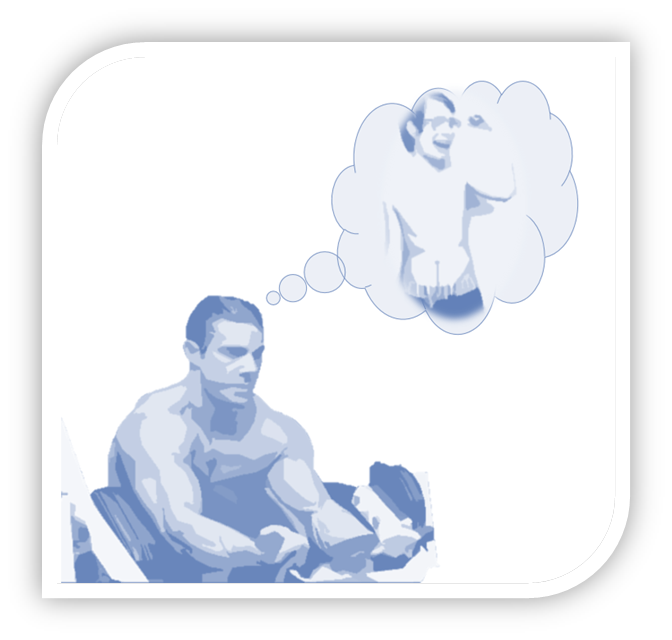 Muscle dysmorphia, or ‘bigorexia’ as it often called, is an obsessive-compulsive disorder in which a person becomes obsessed with their musculature, believing their muscles are not big enough and they are too skinny. Even if they have what most would consider a good musculature, they perceive it as inadequate. As a result, they spend countless hours every day in the gym, lifting weights obsessively in an effort to correct this perceived inadequacy. They may take supplements or even steroids to achieve their aim. They are obsessed by eating the right things and will adjust their entire lives around ‘bulking up’.
Muscle dysmorphia, or ‘bigorexia’ as it often called, is an obsessive-compulsive disorder in which a person becomes obsessed with their musculature, believing their muscles are not big enough and they are too skinny. Even if they have what most would consider a good musculature, they perceive it as inadequate. As a result, they spend countless hours every day in the gym, lifting weights obsessively in an effort to correct this perceived inadequacy. They may take supplements or even steroids to achieve their aim. They are obsessed by eating the right things and will adjust their entire lives around ‘bulking up’.
People with muscle dysmorphia tend to selectively attend to what they consider to be a defect; for example, being too thin, frail or underweight. They are hypervigilant to even a small deviation from their perceived ideal – they become preoccupied with their bodies, constantly comparing it to an unattainable ideal. They will ignore any information about body image that is not consistent with their perceived reality.
Muscle dysphorpia is most common in men, often starting in the late teens. It can affect a person’s mood, and is often associated with depression and feelings of disgust. This condition can also interfere with the person’s life and relationships as their preoccupation renders them unable to enjoy life and relax without worrying about how others see them.
Do not panic if this sounds like you! People can show all these symptoms and still not be muscle dysmorphic. If building your muscles permeates every aspect of your life and the thought of not going to the gym fills you with dread, then perhaps look into this more. A newspaper article last year (http://www.dailymail.co.uk/news/article-2396498/Doctors-warn-rise-number-men-suffering-bigorexia.html) claims that 45% of men have been muscle dysmorphic at some point in their lives. The man in the video might be diagnosed with muscle dysmorphia, but regardless of diagnosis his behaviour and appearance would not, I’m sure, be considered ‘normal’ by the vast majority of people.
What causes it?
There are many theories as to its cause. Cultural explanations, for example, include comparisons with idealised cultural figures such as unattainably muscular heroes in films and comic books, and the media’s portrayal of the idealised male body type. Other explanations include family dynamics, biological predispositions, psychological vulnerabilities such as low self-esteem, and early childhood experiences of teasing and bullying.
How do you deal with it?
The main problem is often getting them to admit there is a problem. For those who obtain help, talking therapies such as cognitive-behavioural therapy combined with medication is the norm. But the first stop is definitely a visit to the GP.
